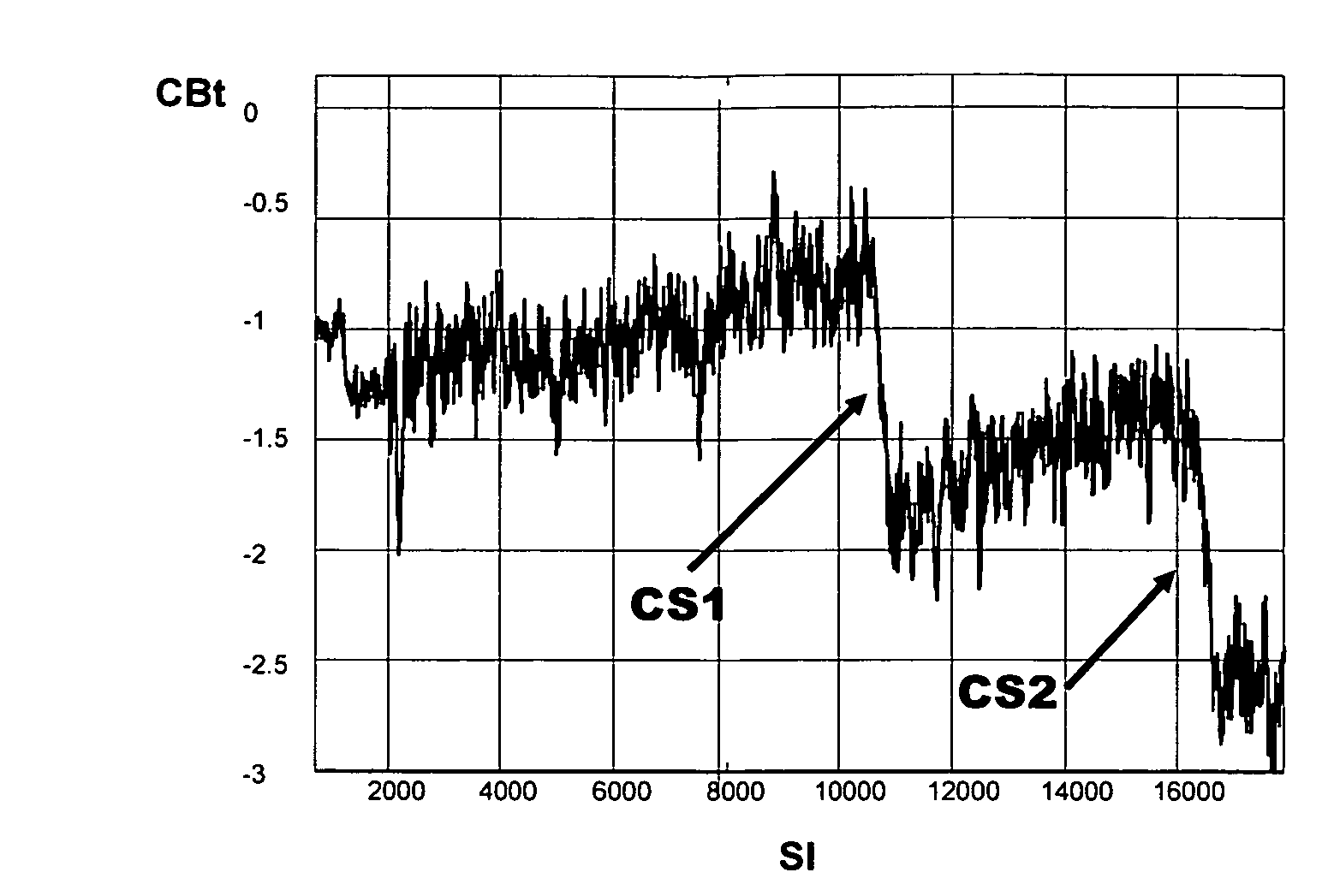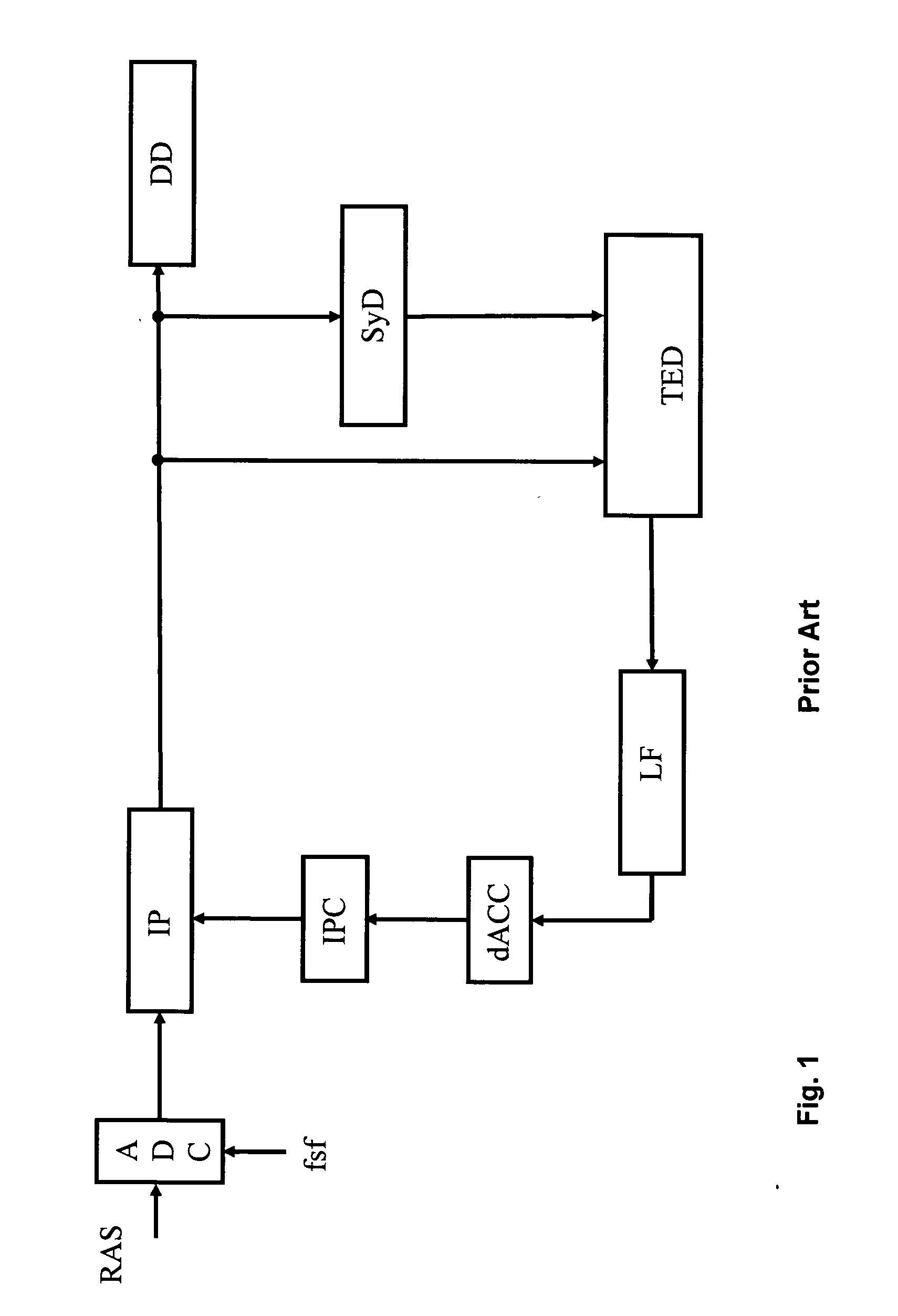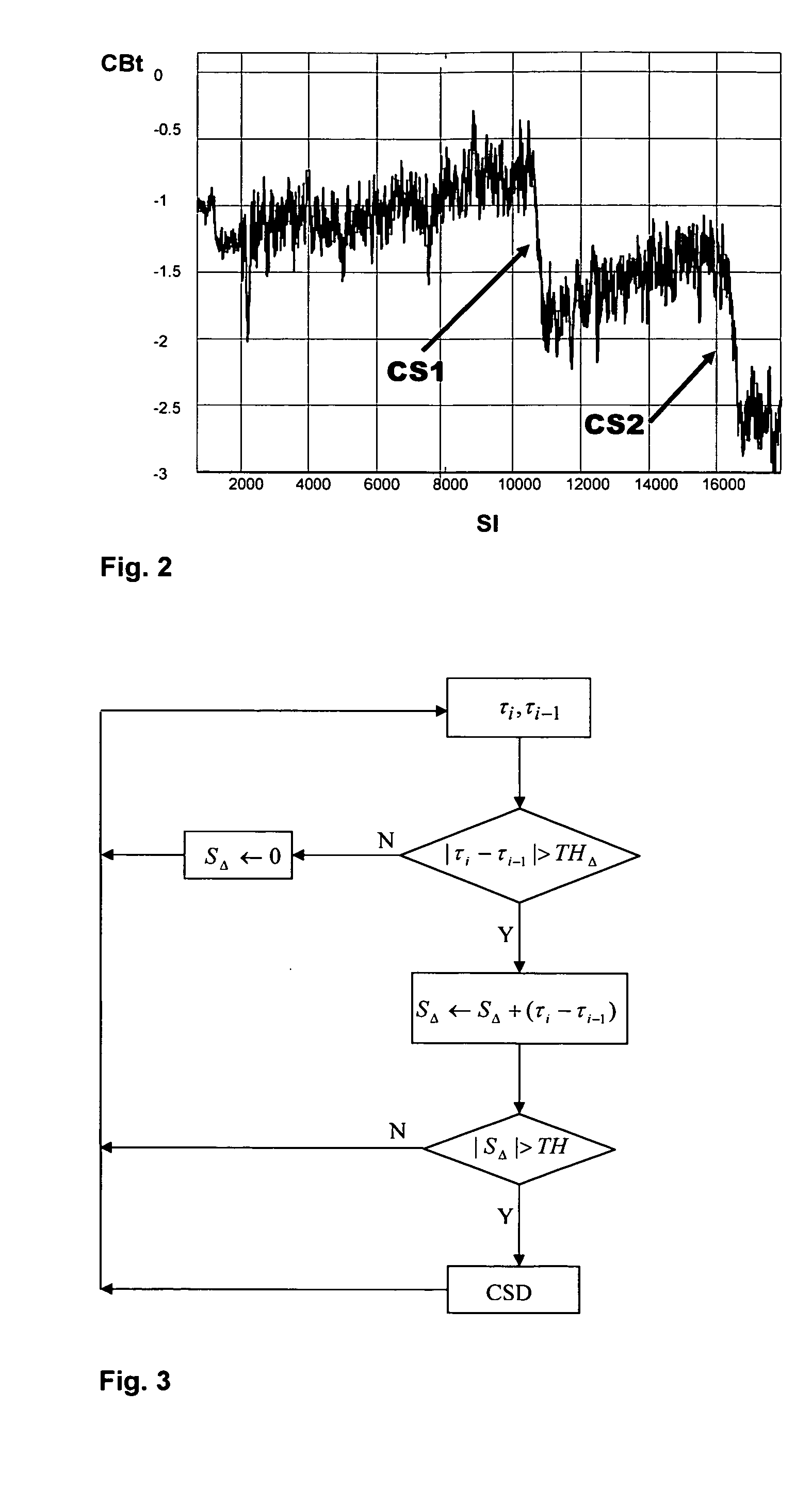Cycle slip detection for timing recovery
a timing recovery and cycle slip technology, applied in the direction of noise figure or signal-to-noise ratio measurement, digital transmission, instruments, etc., can solve the problems of low signal-to-noise ratio, more challenging timing recovery, and burst errors, so as to improve cycle slip detection and low signal-to-noise ratio
- Summary
- Abstract
- Description
- Claims
- Application Information
AI Technical Summary
Benefits of technology
Problems solved by technology
Method used
Image
Examples
Embodiment Construction
[0030]Like numerals and characters designate like elements throughout the figures of the drawings.
[0031]Reference is initially directed to FIG. 1, which generally illustrates the basic portions of a fully digital implementation of a timing recovery control loop for interpolated timing recovery as disclosed in FIG. 27.2 by P. Kovintavewat et al, “Interpolated timing recovery”, in CRC Handbook of Coding and Signal Processing for Magnetic Recording Systems, 2005, pp. 27-1-27-16. A received analog signal RAS comprising digital data as e.g. provided by reading a high-density data storage medium or received by mobile phone is applied to an analog digital converter ADC having a fixed sampling frequency fsf, which means that the received signal is asynchronously sampled. The advantage of asynchronous sampling is that the sampling frequency does not need to be a multiple of the symbol frequency and a system known as interpolated timing recovery is employed for timing adjustment to obtain syn...
PUM
 Login to View More
Login to View More Abstract
Description
Claims
Application Information
 Login to View More
Login to View More - R&D
- Intellectual Property
- Life Sciences
- Materials
- Tech Scout
- Unparalleled Data Quality
- Higher Quality Content
- 60% Fewer Hallucinations
Browse by: Latest US Patents, China's latest patents, Technical Efficacy Thesaurus, Application Domain, Technology Topic, Popular Technical Reports.
© 2025 PatSnap. All rights reserved.Legal|Privacy policy|Modern Slavery Act Transparency Statement|Sitemap|About US| Contact US: help@patsnap.com



